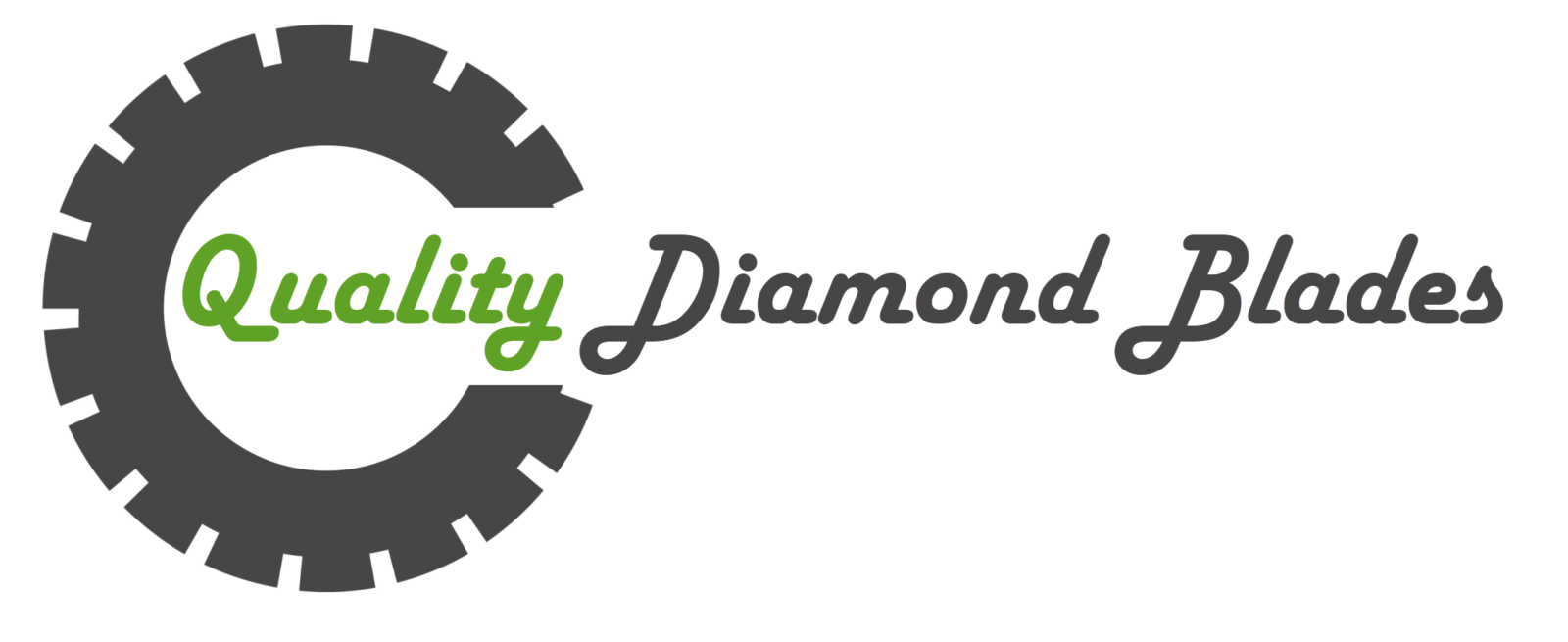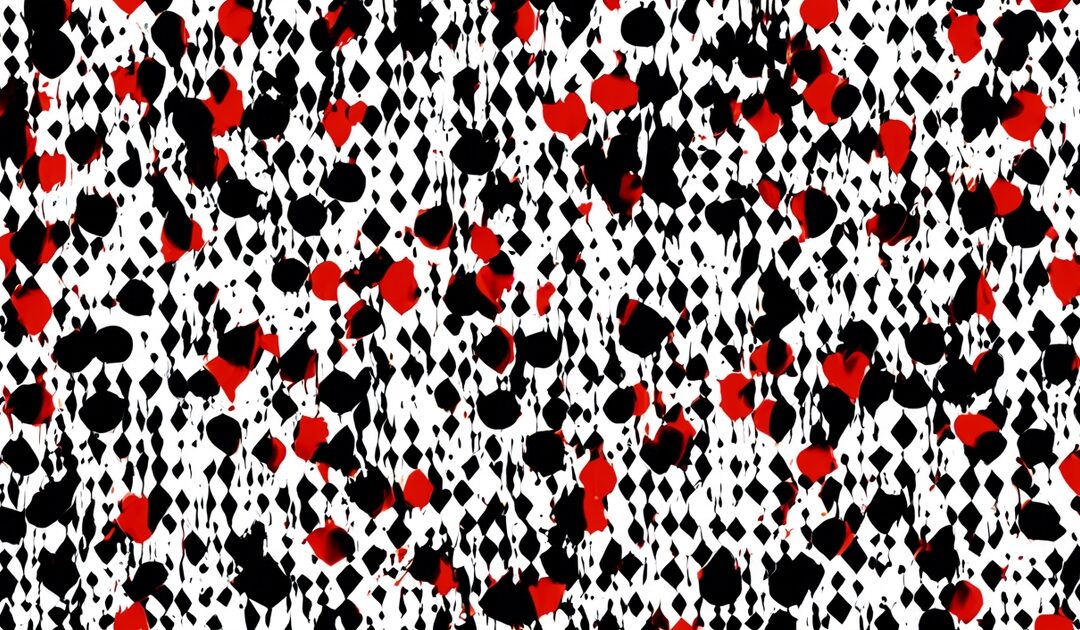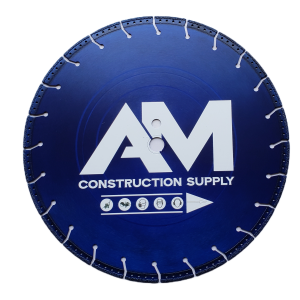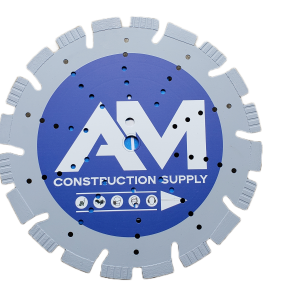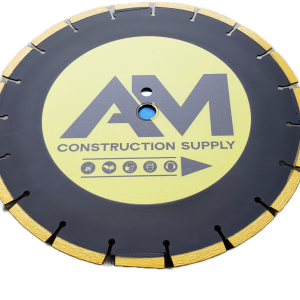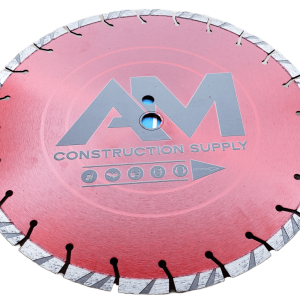Exploring the relationship between cutting speed and diamond blade lifespan unveils a crucial aspect of maximizing efficiency in construction projects. Understanding how the pace of cutting impacts the longevity of diamond blades is key to optimizing performance and cost-effectiveness on-site. Historical context reveals the evolution of cutting tools, highlighting the pivotal role that speed plays in enhancing productivity while preserving equipment durability. Delving into this correlation offers valuable insights for professionals seeking to elevate their cutting process, surface variation, and achieve superior results in various applications.
Key Takeaways
- Adjust cutting speed based on material hardness and blade diameter to optimize diamond blade lifespan.
- Regularly inspect diamond blades for wear and damage to prevent premature failure and ensure safety.
- Implement proper cooling techniques and use appropriate blade specifications to extend the lifespan of diamond blades.
- Choose diamond blades with the right bond type and segment design for specific cutting applications to enhance durability.
- Refer to real-world case studies and applications to understand the impact of cutting speed on diamond blade lifespan.
- Avoid common mistakes like improper blade selection and inadequate maintenance to prolong the effectiveness of diamond blades.
Understanding Diamond Blades
Types and Uses
Diamond blades come in various types such as continuous rim, turbo rim, and segmented blades, each designed for specific applications. They excel in cutting hard materials like concrete, asphalt, and stone. Their precision, cutting blades make them ideal for construction, masonry, and renovation projects.
-
Pros:
- Precise cuts
- Long lifespan
- Versatile applications
-
Cons:
- Higher initial cost
- Not suitable for all materials
Quality Matters
High-quality diamond blades are crucial for optimal performance and durability. The materials used in manufacturing significantly impact cutting efficiency. Cheaper blades may wear out quickly, leading to frequent replacements and higher long-term costs.
-
Pros:
- Enhanced durability
- Consistent performance
- Cost-effective in the long run
-
Cons:
- Higher upfront investment
- Lower initial affordability
Cutting Performance
Factors like bond type, diamond quality, and blade design influence cutting performance. Diamond blades outperform traditional tools due to their precision and speed. Improved cutting efficiency enhances productivity while maintaining high-quality finishes.
-
Factors affecting cutting performance:
- Bond strength
- Diamond concentration
- Blade thickness
-
Comparison with traditional tools:
- Faster cutting speed
- Smoother finishes
- Reduced chipping or cracking
Cutting Speed Explained
Definition and Importance
Cutting speed refers to the rate at which diamonds on a diamond blade move across the surface of the material being cut. Understanding cutting speed is crucial as it directly impacts the lifespan of diamond blades. The relationship between cutting speed and blade lifespan is critical for efficient cutting operations.
The key parameters defining cutting speed include rotational speed, feed rate, and surface feet per minute (SFM). Optimizing these parameters is essential to minimize tool wear and extend blade longevity. Maintaining an optimal cutting speed ensures consistent and precise cuts while reducing the risk of blade damage and tool wear.
Impact on Efficiency
The cutting speed of diamond blades, diamonds, plays a significant role in determining the efficiency of cutting operations. Higher cutting speeds result in faster cuts but can lead to increased wear on the blade. On the other hand, slower speeds prolong the lifespan of the blade but might compromise cutting efficiency.
Balancing cutting speed with blade lifespan is crucial for achieving optimal operational efficiency. By adjusting the cutting speed based on the material being cut and the desired outcome, operators can achieve a balance between productivity and tool longevity. For instance, when cutting hard materials like granite, lowering the cutting speed can prevent premature blade wear and ensure smoother cuts.
Optimal Speed Range
Different types of diamond blades have recommended speed ranges based on the materials they are designed to cut and cutting process. Operating within these specified ranges is vital for maximizing both blade lifespan and cutting performance. Exceeding or operating below these ranges can result in inefficient cuts and premature blade failure.
Lifespan of Diamond Blades
Factors Affecting Lifespan
Diamond blade lifespan is influenced by various factors, including cutting forces and the cutting process, that must be carefully considered. Cutting parameters, such as speed, feed rate, and depth of cut, play a crucial role in determining how long a diamond blade will last. These parameters directly impact the amount of heat generated during cutting, affecting the blade’s wear rate.
Moreover, material properties also significantly affect the lifespan of diamond blades. The hardness, abrasiveness, and composition of the material being cut, along with cutting forces, can accelerate or prolong blade wear. For instance, cutting through dense materials like concrete or granite can wear down a blade faster than cutting softer materials like asphalt.
To maximize the lifespan of diamond blades, it is essential to consider multiple factors simultaneously. By optimizing cutting parameters based on the material being cut and ensuring proper blade selection for specific applications, users can extend the longevity of their diamond blades significantly.
Signs of Wear
Recognizing common signs of wear and deterioration in diamond blades is crucial for maintaining cutting efficiency and preventing premature failure. One common indicator of wear is a decrease in cutting performance, such as slower cutting speeds or increased vibration during operation.
Early indicators of blade wear may include chipping or uneven wear along the cutting edge. As soon as these signs become apparent, it is important to inspect the blade thoroughly and consider replacing it if necessary to avoid compromising cutting quality and safety.
Monitoring the condition of diamond blades regularly is essential for identifying signs of wear promptly. By conducting visual inspections before and after each use and paying attention to changes in cutting performance, operators can detect wear early on and take appropriate maintenance actions to prolong the life of their blades.
Relationship Between Cutting Speed and Blade Lifespan
Direct Effects
Adjusting cutting speed directly influences how quickly a diamond blade wears out. Higher speeds can lead to more rapid wear, shortening the blade’s lifespan. Conversely, reducing the cutting speed can extend the blade’s durability by minimizing wear.
The relationship between cutting speed and blade longevity is straightforward: faster speeds generate more friction and heat, accelerating the erosion of the diamond segments. Slower speeds, on the other hand, reduce friction and heat buildup, preserving the integrity of the blade for a longer period.
Speed vs. Wear Patterns
At higher cutting speeds, diamond blades exhibit more significant wear patterns due to increased abrasion against the material being cut. These wear patterns often manifest as quicker deterioration of the diamond segments, impacting the overall performance and lifespan of the blade.
Conversely, lower cutting speeds result in less pronounced wear patterns on diamond blades. The reduced abrasion allows for slower erosion of the diamond segments, contributing to an extended lifespan for the blade compared to high-speed cutting operations.
Adjusting Speed for Longevity
To maximize the lifespan of diamond blades, it is crucial to tailor cutting speed based on specific applications and materials. When working with harder materials like granite or concrete, slower cutting speeds are recommended to minimize wear and prolong blade life.
Optimizing cutting speed involves striking a balance between efficiency and longevity. By adjusting the speed according to material hardness and cutting conditions, operators can enhance both performance and durability of diamond blades. Fine-tuning speed settings ensures that blades endure prolonged use without compromising quality.
Maximizing Diamond Blade Lifespan
Proper Speed Selection
Choosing the right cutting speed is crucial for maximizing diamond blade lifespan. Different materials and tasks require specific speeds to ensure optimal performance. By considering factors such as material hardness and blade diameter, users can determine the ideal speed range that balances efficiency and longevity. For instance, cutting hard materials like concrete at a lower speed can prevent overheating and premature wear, thus extending the blade’s life. Proper speed selection not only enhances cutting precision but also minimizes tool wear, resulting in cost savings over time.
Maintenance Tips
To prolong the lifespan of diamond blades, regular maintenance is essential. Conducting routine inspections to check for damage or wear allows users to address issues promptly and prevent further damage. Cleaning blades after each use removes debris that can impair cutting performance and cause unnecessary stress on the blade. lubrication plays a vital role in reducing friction during cutting, thereby increasing the blade’s efficiency and durability. Implementing a maintenance checklist, including inspection, cleaning, and lubrication, ensures that diamond blades remain in optimal condition for extended periods.
Blade Cooling Techniques
Efficient blade cooling techniques are crucial for reducing heat buildup and extending the lifespan of diamond blades. Heat generation during cutting can lead to blade warping or even premature failure. Employing water cooling systems or air cooling methods helps dissipate heat effectively, maintaining the blade’s temperature within safe limits. Water cooling is particularly effective for continuous cuts in hard materials, while air cooling provides quick cooling between cuts on softer surfaces. Effective blade cooling not only improves cutting performance but also significantly extends the overall lifespan of diamond blades.
Case Studies and Real-World Applications
Industry Examples
In the construction industry, optimizing cutting speed can significantly impact diamond blade lifespan. For instance, a leading construction company conducted experiments to determine the ideal cutting speed for different materials. By adjusting the speed based on material hardness, they extended blade lifespan by 20%.
Another industry benefiting from this relationship is manufacturing. A case study revealed that a metal fabrication plant improved operational efficiency by implementing specific cutting speed strategies. By aligning the speed with material type, they reduced downtime for blade changes, resulting in a 15% increase in productivity.
Several companies have experienced substantial cost savings by maximizing diamond blade lifespan through optimized cutting speeds. One notable success story is a marble quarry that implemented tailored cutting speed techniques. This led to a 25% reduction in tool replacement costs and a significant boost in overall productivity.
Success Stories
A manufacturing business witnessed a remarkable increase in profitability after focusing on cutting speed optimization. By conducting experiments to identify the most efficient speeds for various materials, they achieved a 30% reduction in tool replacement expenses. This not only saved costs but also enhanced their competitive edge.
In another success story, a metalworking company successfully improved its cutting efficiency by fine-tuning blade lifespan through optimal speeds. By utilizing advanced cutting techniques and adjusting speeds accordingly, they managed to reduce waste and enhance precision, ultimately gaining a reputation for high-quality craftsmanship.
Implementing effective strategies related to cutting speed and blade lifespan provides businesses with significant competitive advantages. Companies that prioritize these factors experience reduced production costs, minimized downtime, and increased overall efficiency. By staying ahead of the curve in terms of technology and operational practices, organizations can secure long-term success in their respective industries.
Choosing the Right Diamond Blade
Considerations for Selection
When selecting a diamond blade, consider factors like cutting speed requirements, material hardness, and cutting parameters. Evaluate different blade options based on their compatibility with varying cutting speeds. Ensure the chosen diamond blade can handle the specific demands of your cutting application.
- Differentiate between diamond blades designed for high-speed cutting and those optimized for slower speeds.
- Evaluate the material composition of abrasive wheels to match with the desired cutting speed.
- Check for features like segment height and bond hardness to determine suitability for different cutting speeds.
Quality Diamond Blades as the Best Choice
Investing in high-quality diamond blades ensures long-term cost savings due to their durability and performance. Premium diamond blades offer superior cutting precision and efficiency. Opting for quality blades is ideal for demanding applications requiring precision cuts.
-
Benefits:
- Longer lifespan leading to reduced replacement costs.
- Enhanced cutting efficiency resulting in time savings.
- Superior performance ensuring clean and precise cuts.
-
Advantages:
- Increased productivity due to consistent cutting performance.
- Reduced downtime from blade wear, leading to uninterrupted workflow.
- Enhanced safety during operation due to reliable blade quality.
Common Mistakes to Avoid
Misusing Blades
Improper blade handling can significantly reduce the lifespan of diamond blades. For instance, applying excessive pressure during cutting can cause overheating and damage. Another common mistake is using the wrong blade for a specific material, leading to premature wear. To avoid these issues, ensure to use the appropriate blade for each cutting application.
Improper cutting practices can also contribute to a shorter blade lifespan. For example, forcing the blade through the material instead of letting it cut at its natural speed can cause unnecessary strain. Not allowing the blade to cool down between cuts can lead to overheating and decreased longevity. By following proper cutting techniques and allowing the blade to work efficiently, you can extend its lifespan.
Ignoring Maintenance
Neglecting routine maintenance tasks can have detrimental effects on diamond blade lifespan. Failing to clean the blade after use can result in residue buildup, affecting cutting performance over time. Moreover, not inspecting the blade for damage or wear regularly can lead to unexpected failures during operation. It is crucial to clean the blade thoroughly after each use and inspect it for any signs of damage or wear.
Ignoring blade maintenance practices can compromise cutting performance and safety. Overlooking tasks such as checking for loose segments or ensuring proper water flow to cool the blade can increase the risk of accidents and reduce efficiency. Regularly lubricating the blade and adjusting water flow settings as needed are essential maintenance practices that should not be overlooked. By prioritizing maintenance, you can maximize both the functionality and longevity of your diamond blades.
FAQs on Cutting Speed and Blade Lifespan
Expert Answers
Industry experts emphasize the critical link between cutting speed and diamond blade lifespan. Maintaining an optimal cutting speed is vital for maximizing the longevity of your diamond blade. By balancing the cutting speed, you can significantly extend the lifespan of your blade.
To optimize cutting speed and enhance blade lifespan, experts recommend using the appropriate RPM (Revolutions Per Minute) for your specific saw and material. Running a diamond blade at the correct RPM reduces wear and tear, prolonging its usability. Adjusting the cutting speed according to the material being cut is crucial for efficient performance.
Experts suggest that excessive pressure or force during cutting can lead to accelerated wear on your diamond blade. Applying too much pressure not only decreases cutting efficiency but also shortens the lifespan of the blade. Maintaining a steady and consistent feed rate while cutting helps in reducing wear and tear on the blade.
Proper maintenance of your diamond blade plays a significant role in extending its lifespan. Experts advise regularly cleaning the blade to remove debris and prevent build-up, which can affect cutting performance. Ensuring proper lubrication while cutting reduces friction and heat generation, thus preserving the integrity of the blade.
When it comes to selecting the right diamond blade for your project, experts stress the importance of considering factors such as blade hardness, segment design, and bond type. Choosing a blade that matches your specific cutting requirements ensures optimal performance and longevity. Investing in a high-quality diamond blade upfront can result in longer lifespan and cost savings in the long run.
Closing Thoughts
You’ve now uncovered the intricate dance between cutting speed and diamond blade lifespan. By grasping the nuances of these factors, you hold the key to maximizing your blade’s longevity and efficiency. Remember, it’s not just about speed but finding that sweet spot where performance meets durability.
As you venture into your next cutting project, armed with this newfound knowledge, choose your blade wisely, adjust your speed thoughtfully, and watch as your tools work harmoniously to deliver exceptional results. Now, go out there and let your cuts be as sharp as your understanding of diamond blades!
Frequently Asked Questions
How does cutting speed impact the lifespan of a diamond blade?
Cutting speed directly affects a diamond blade’s lifespan. High cutting speeds generate more heat, leading to faster wear on the blade. Optimal speed balance is crucial for maximizing blade longevity and cutting efficiency.
Can using a lower cutting speed extend the lifespan of a diamond blade?
Yes, operating at a lower cutting speed can help prolong the lifespan of a diamond blade. Slower speeds reduce friction and heat buildup, preventing premature wear on the blade’s diamond segments. It’s essential to find the right balance for efficient cutting.
What are the consequences of using a diamond blade at an excessively high cutting speed?
Excessive cutting speeds can cause detrimental effects on a diamond blade. It accelerates wear and reduces the blade’s effectiveness, leading to poor cutting performance and potential damage to the material being cut. Maintaining an appropriate speed is key to optimal results.
How can I determine the ideal cutting speed for my diamond blade?
The ideal cutting speed depends on various factors like material type, blade size, and machine power. Consult the manufacturer’s guidelines or conduct tests to find the optimal speed for your specific application. Adjusting the speed accordingly will enhance both performance and longevity.
Is it advisable to constantly vary the cutting speed during a single operation?
Consistently varying cutting speeds within one operation is not recommended. Doing so can disrupt the balance needed for efficient cutting and may result in uneven cuts or premature wear on the diamond blade. It’s best to maintain a steady and appropriate speed throughout the task.
Does water usage during cutting affect the relationship between cutting speed and diamond blade lifespan?
Water serves as a coolant during cutting operations, helping manage heat buildup and lubricating the blade for smoother cuts. Proper water usage can enhance both cutting speed efficiency and extend the lifespan of a diamond blade by reducing friction-related wear.
